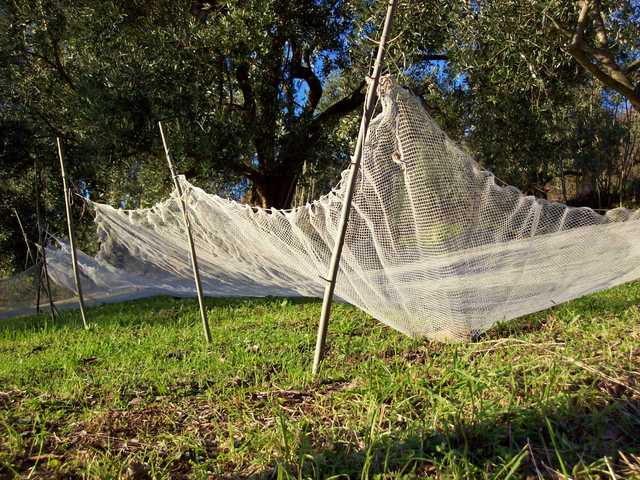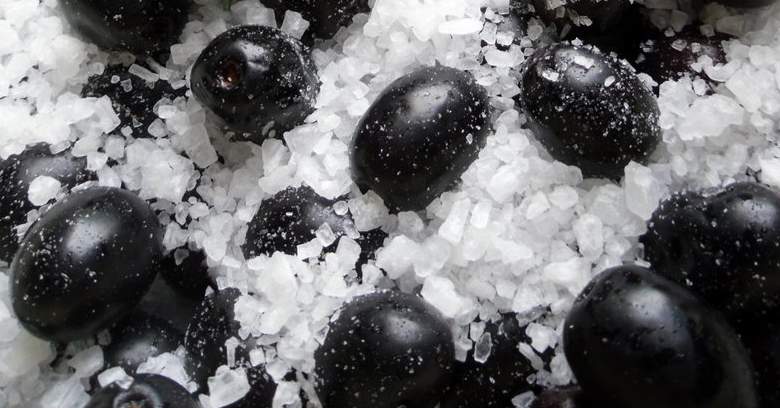Suddenly our normally quiet little village is very busy. People who don’t live here, but have land in the area, are coming and going every day: it’s time for the olive harvest.

The first step is to clear the terraces on which the olives are planted of dead leaves. Then the nets are spread beneath the trees in order to collect the olives that fall onto the ground. This year’s harvest is pretty meagre, probably due to the unusually hot summer, but we’ve also heard that a late frost killed off a lot of the flowering buds. We too have a handful of olive trees on our land, but they are still quite young, and our harvest is so small that would probably only make enough oil to fill a a thimble!
Have you ever tried to eat an olive freshly picked from the tree? I have! They are extremely bitter, and very different from the pickled olives that we’re used to buying. To render them edible, olives must first be treated to eliminate that bitterness. The most common treatment used here in our area is to soak the olives in water for 20 days, but it’s a very tedious process because you have to remember to change the water everyday.
After having washed them in this way, the olive can be preserved in brine with herbs and spices. My favourite way of preserving olives, however, is “Olive alla Lucana” (Olives in the Lucanian style). Their name comes from Lucania, the old name for the region Basilicata, down in the south of Italy. This recipe, which is very simple and tasty, has become a favourite with all of my friends who’ve sampled my preserved olives. Here it is:
|
Ingredienti:
|
Ingredients:
|
|
olive nere
|
black olives
|
|
buccia d’arancia non trattata
|
orange peel, untreated
|
|
buccia di limone non trattata
|
lemon peel, untreated
|
|
buccia di mandarino non trattata
|
mandarin peel, untreated
|
|
sale marino grosso
|
coarse sea salt
|
|
olio extravergine d’oliva
|
extra virgin olive oil
|
|
peperoncino
|
chilli pepper
|
|
aglio
|
garlic
|
|
origano
|
oregano
|
Metodo = Method
Peel the rind from citrus fruit very thinly making sure that you only take the actual rind and not layer of the bitter white flesh underneath. Put the olives and the citrus rinds into a large container with a a lid. Add enough coarse sea salt to cover the olives. Mix them thoroughly and then leave them to rest. Turn or shake the olives every day in order to evenly distribute the salt. You’ll notice that the salt eventually dissolves, drawing the bitter water out of the olives.

After 20 days, remove the citrus peels, drain the olives, and wash them in warm water in order to get reed of all remaining salt. Then carefully dry them with a clean tea towel.
Put the olives in a clean jar and add a little oil, just enough to coat them thoroughly without soaking them. Season with chilly pepper, sliced garlic cloves and oregano according to taste. Leave the olives to rest for another couple of weeks before eating them. They should keep for up to two years.
Buon Appetito







Comments:
Chippy:
What a lovely piece of local life, not to mention the helpful vocab and recipe! Thank you!